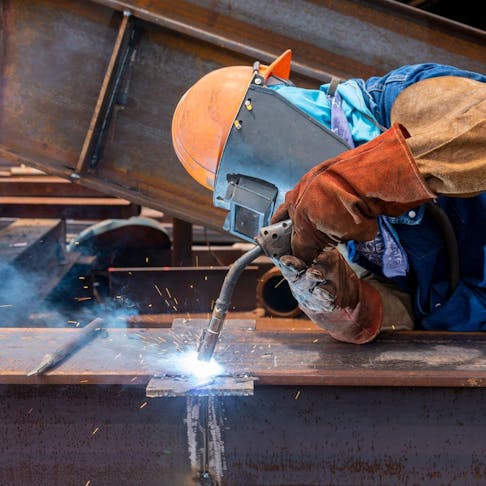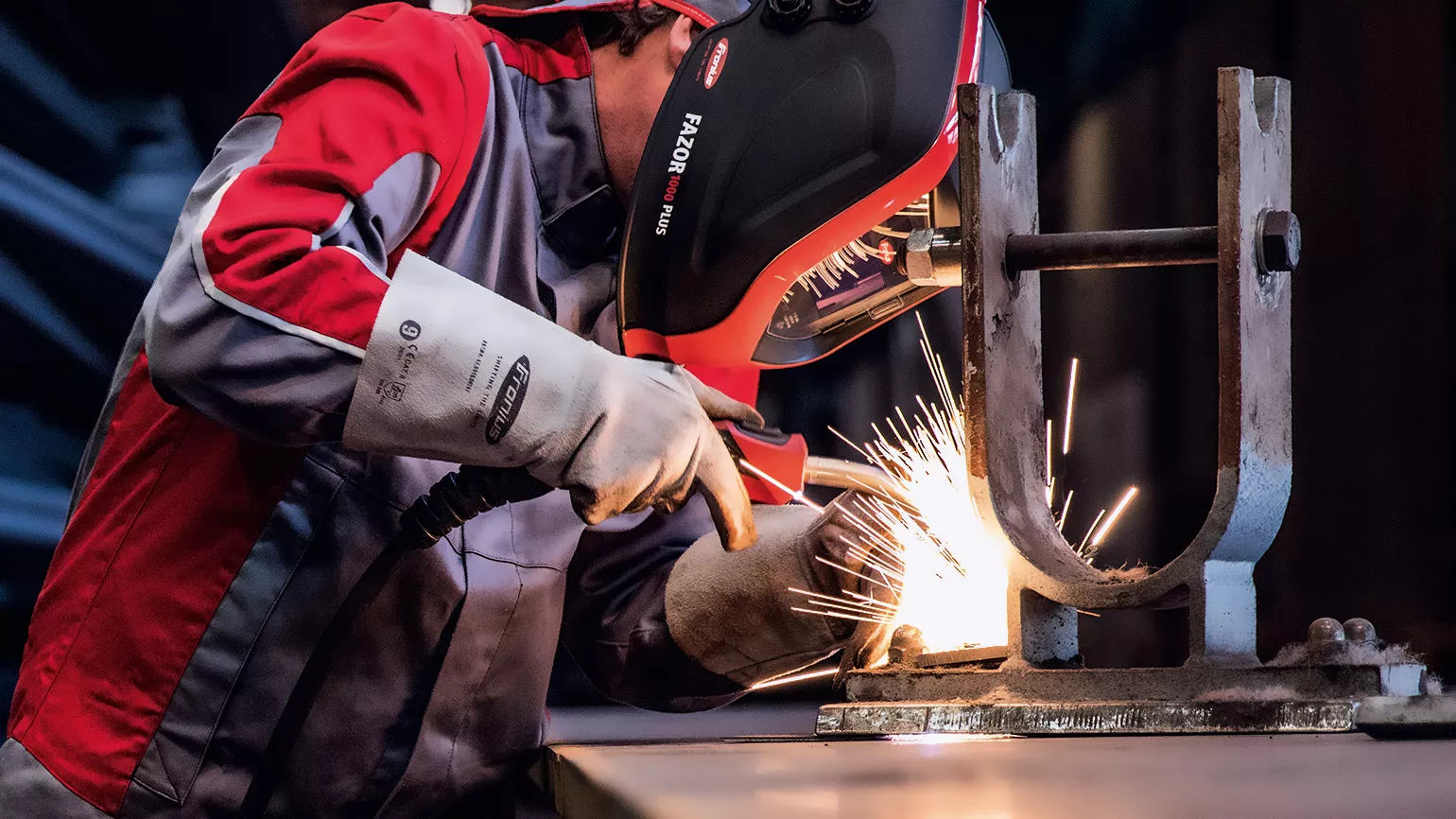Everything about Welding: Secret Insights Into Techniques and Best Practices for Success
Welding includes a range of strategies, each matched for specific products and applications. Recognizing these techniques, such as GMAW, SMAW, and TIG, is vital for achieving excellent results. Moreover, the appropriate tools and safety and security practices can not be overlooked. As prep work and troubleshooting play critical functions in the welding process, mastering these aspects can greatly boost the high quality of the end product. What are the key factors that ensure a successful weld?
Comprehending Different Welding Techniques
Welding techniques include a range of methods, each matched to specific applications and materials. Amongst the most usual strategies are Gas Steel Arc Welding (GMAW), Shielded Steel Arc Welding (SMAW), and Tungsten Inert Gas Welding (TIG) GMAW, likewise called MIG welding, is preferred for its speed and versatility, making it ideal for thin materials. SMAW, or stick welding, is favored for its simplicity and effectiveness in outside atmospheres, specifically with thicker metals. TIG welding uses precision and control, making it suitable for complex job and non-ferrous steels (Montana Mobile Welding and Repair Belgrade Welding). Each strategy has its special benefits and considerations, enabling welders to choose the very best method based upon the project's requirements, product type, and preferred results. Comprehending these techniques is important for successful welding
Vital Welding Devices and Tools
While numerous welding techniques call for specific abilities, the ideal equipment and devices are equally essential for achieving quality results. Necessary welding tools includes welding equipments, which vary relying on the technique-- such as MIG, TIG, or stick welding. Protective equipment, consisting of aprons, helmets, and gloves, warranties security and comfort throughout the procedure. Furthermore, fixtures and clamps aid safeguard products in position, guaranteeing precision in welds. Consumables like welding rods, cable, and shielding gas are additionally critical parts that affect the high quality of the weld. In addition, devices such as cutters and mills help with surface prep work and post-weld ending up, contributing to a specialist end result. Buying high-grade devices inevitably enhances the performance and effectiveness of welding projects.
Security Practices in Welding
Proper security techniques are crucial in the welding market to protect employees from possible risks. Welders should put on ideal individual protective devices (PPE), consisting of helmets with proper shading, gloves, and flame-resistant clothing. Appropriate ventilation is crucial to reduce exposure to damaging fumes and gases produced throughout the welding procedure. In addition, employees must be educated in the appropriate handling of welding equipment to avoid accidents. Fire safety and security steps, such as keeping flammable products away from the welding area and having fire extinguishers easily offered, are necessary. Routine evaluations of tools and work spaces can help identify possible threats prior to they result in accidents. By adhering to these safety and security practices, welders can create a safer working environment and reduce risks related to their profession.
Preparing Materials for Welding
Preparing materials for welding is an essential action that considerably influences the top quality and stability of the end product (Belgrade). Proper preparation includes cleansing the surfaces to eliminate contaminants such as dust, oil, and corrosion, which can compromise the weld. Techniques such as grinding, sanding, or making use of solvents are frequently employed to accomplish a clean surface. In addition, ensuring that the materials mesh well is vital; voids can result in weak welds. It's also important to think about the placement and positioning of the parts, as this will impact the convenience of welding and the last end result. Choosing the suitable filler product and guaranteeing compatibility with the base steels is crucial for achieving strong, long lasting welds.
Tips for Getting High-Quality Welds
Achieving top notch welds calls for attention to information and adherence to best techniques throughout the welding procedure. Correct joint preparation is vital, making certain surface areas are complimentary and clean from contaminants. Picking the appropriate filler material and welding method based upon the base steels is crucial for optimal bonding. Maintaining regular traveling rate and angle while welding can protect against issues and promote harmony. Additionally, regulating warm input is vital; too much warmth can cause warping and deteriorated joints. If necessary, on a regular basis evaluating the welds during the procedure permits for immediate modifications. Employing ideal post-weld therapies, such as cleaning and stress and anxiety relief, can enhance the toughness and stability of the weld, inevitably making certain an effective result.
Fixing Usual Welding Issues
Welding typically presents obstacles that can affect the top quality and stability of the final item. Usual concerns such as porosity, irregular weld grains, and getting too hot can emerge, each needing details repairing techniques. Recognizing these problems is important for welders to improve their abilities and attain perfect results.
Porosity Issues Explained
Although porosity can commonly be forgotten, it stays a critical problem in welding that can compromise the stability of a completed item. Porosity describes the existence of tiny gas pockets within the weld bead, which can lead and compromise the joint to premature failing. This issue commonly develops from impurities, moisture, or improper securing gas protection during the welding process. To reduce porosity, welders need to validate that the base products are tidy and completely dry, utilize appropriate shielding gases, and preserve regular welding specifications. Routinely examining the equipment and atmosphere can likewise aid determine prospective problems prior to they manifest in the you could look here weld. Dealing with porosity properly is crucial for accomplishing solid, sturdy welds that satisfy top quality requirements.

Irregular Weld Beans
Irregular weld grains can significantly affect the top quality and toughness of an ended up item. Various variables add to this concern, consisting of incorrect travel rate, inaccurate amperage setups, and inconsistent electrode angles. When the welder moves also quickly, a bead may show up slim and do not have penetration, while moving also slowly can cause extreme accumulation. In addition, utilizing the incorrect amperage can lead to either undercutting or extreme spatter, both of which concession weld honesty. The welder's technique, such as irregular lantern movement, can additionally result in unequal grain appearance. To reduce these issues, welders need to concentrate on maintaining constant, controlled movements and guaranteeing correct tools settings to achieve harmony in their welds. Consistency is key to accomplishing strong and dependable welds.
Getting Too Hot and Bending Issues
Excessive warmth throughout the welding process can result in significant getting too hot and deforming problems, affecting the structural stability of the workpiece. These problems frequently materialize as distortion, which can compromise placement and fit-up, making further setting up testing. Variables adding to overheating include the option of welding criteria, such as voltage and travel rate, along with the sort of material being welded. To reduce these issues, welders must click keep constant travel rate and appropriate heat input while keeping an eye on the work surface temperature level. Additionally, pre-heating or post-weld warmth treatment can aid minimize stresses triggered by rapid cooling - Montana Mobile Welding and Repair Welding. Routine evaluation and adherence to finest techniques are essential in stopping getting too hot and guaranteeing the durability and reliability of welded structures
Often Asked Concerns
What Are the Profession Opportunities in the Welding Industry?
The welding sector supplies diverse job chances, including positions as welders, engineers, instructors, and assessors. Specialists can function in production, construction, aerospace, and automotive industries, taking advantage of strong need and competitive incomes in numerous duties.
Just How Can I Improve My Welding Speed Without Compromising Top Quality?
To improve welding speed without sacrificing high quality, one need to practice efficient strategies, preserve equipment, maximize settings, and improve hand-eye control. Routine training and looking for comments can also significantly add to accomplishing much faster, high-grade welds.
What Qualifications Are Offered for Welders?
Numerous certifications exist for stick welding for beginners welders, consisting of those from the American Welding Society (AWS), the National Facility for Construction Education and Study (NCCER), and various industry-specific organizations. These qualifications enhance employability and demonstrate skill efficiency.
Exactly How Does Welding Impact the Features of Metals?
Welding influences the residential or commercial properties of metals by modifying their microstructure, which can lead to adjustments in firmness, strength, and ductility. Heat input and cooling rates throughout the process greatly influence these material attributes.
Can I Bonded Dissimilar Metals With Each Other?
